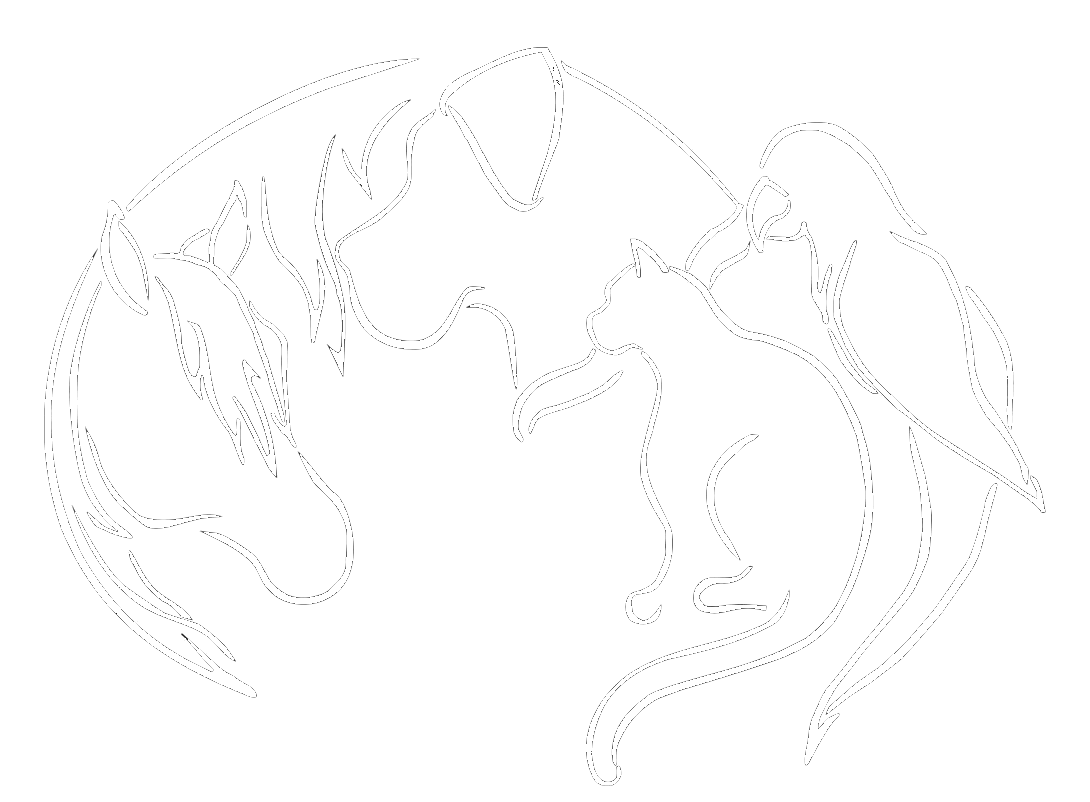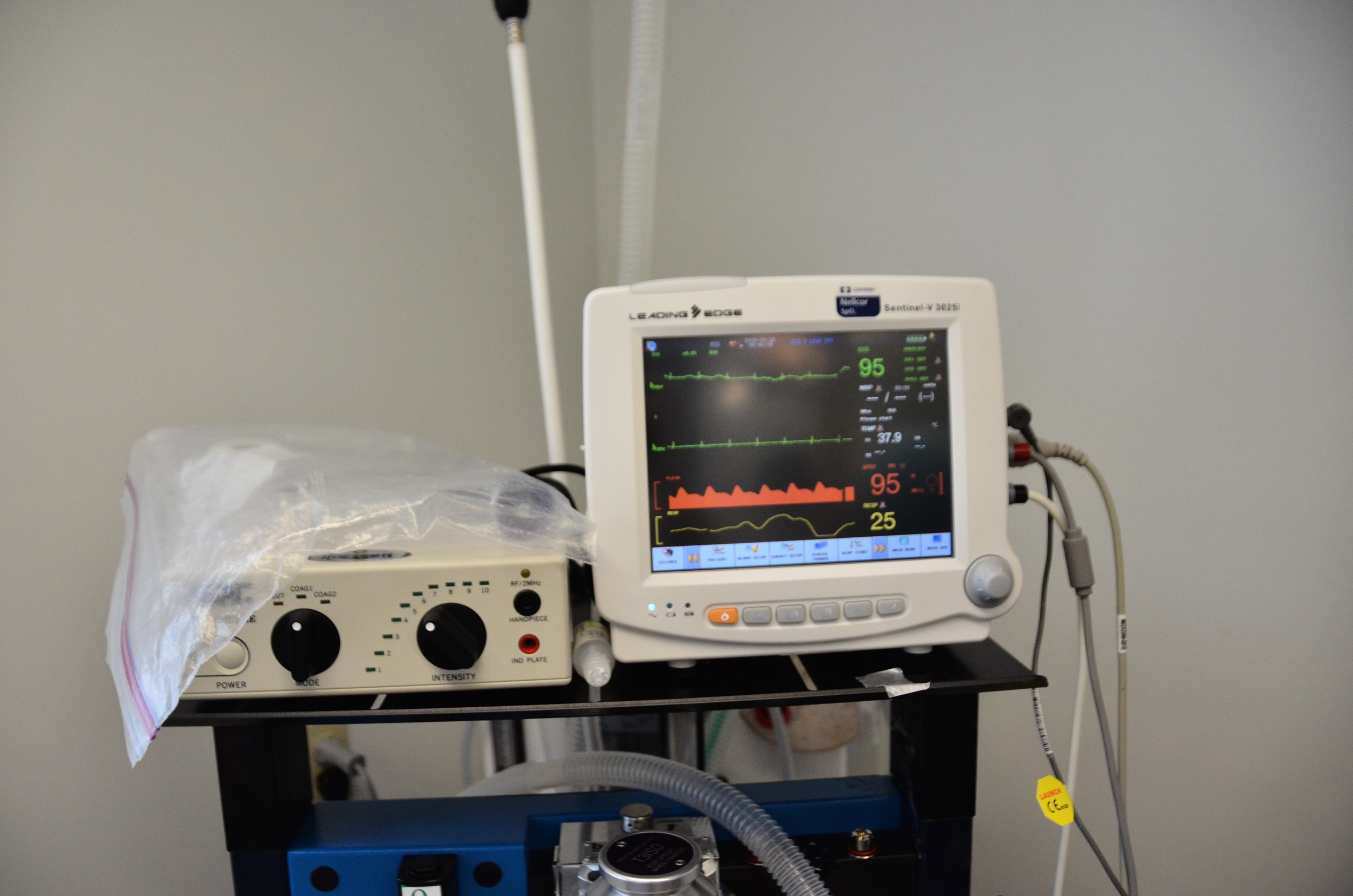In Veterinary Medicine it is often necessary to anaesthetize our patients to perform procedures. This applies not only to surgical procedures, but also in some cases where it is necessary to have a patient relaxed and pain free to perform diagnostics. Anaesthesia can be intimidating for owners as it is inducing a state in their pets that is not familiar. At Alpine Veterinary Medical Centre we take great care when using any anaesthetic protocol in our patients. We believe that anaesthetic protocols should be tailored to the individual animal, its medical condition, the procedure to be performed, and any potential risk factors to being under anaesthesia. Modern veterinary medicine allows us to choose from a great array of anaesthetic agents and protocols to best fit the animal and its needs. We are always improving on these agents and protocols as advances in medicine progress. We have also had the opportunity to bring a Veterinary Anaesthesiologist up to the Yukon (see Visiting Specialists under Our Medical Team) to further enrich our anaesthetic knowledge and clinical practice.
Levels of Anaesthesia
There are three levels of anaesthesia which you veterinarian may refer to when discussing an anaesthetic protocol on your pet.
Sedation - this is the first level of anaesthesia in which a patient is given a drug or combination of drugs to help them relax but not be completely asleep. This can be given orally, intravenously, intramuscularly, or more commonly at our clinic, by an injection under the skin. This is used to calm animals for minor procedures or as the first step of a more involved anaesthetic protocol.
Induction - this is the second level and produces a comatose state in the patient. This is achieved by an intravenous injection after placement of an intravenous catheter and attached to an intravenous line and fluids. All surgeries or procedures involving induction at our clinic are placed on intravenous fluids. These are the bags of fluid you may see attached to your pet in the clinic or you may see the lines running through an intravenous pump which delivers a constant and programmable rate of infusion.
Maintenance - this is the third level and is accomplished by introducing an anaesthetic gas to the patient through an endotracheal tube. This is a tube placed into the trachea of a patient through the mouth. It has a inflatable cuff on the end to prevent material from entering the trachea and lungs during anaesthesia.
Anaesthetic Monitoring
At Alpine Veterinary Medical Centre we take great care to monitor our patients during anaesthesia. We accomplish this by means of monitoring equipment which is standard for all general anaesthetic procedures. Monitoring includes:
Electrocariogram (ECG) - this measures the electrical impulses of the heart and provides a readout of the heart's activity. If an abnormality is observed, the ECG can be readily recorded for further analysis.
Pulse Oximetry - this is a measure of the oxygen carrying capacity of the blood. The instrument uses an infrared light to measure the transparency of the blood cells and report the oxygen content as a percentage. It also acts, as does the ECG, to measure heart rate.
Blood Pressure - this is measured using an inflatable cuff on the leg that automatically cycles through taking readings so that we can track any changes in the pressure during surgery. If an abnormality is observed, we can take measures to correct it.
Respiratory Rate - we use a specific respiratory monitor to measure the rate of breathing of our patients.
As anaesthesia can also cause a drop in body temperature during a procedure, all of our patients are placed on a circulating hot water pad and covered in a forced warm air blanket to keep the patient's temperature constant during surgery.
All of our patients are also continuously monitored by our trained veterinary technicians throughout and following an anaesthetic protocol. A record of the animal's anaesthetic depth and detailed physical parameters are recorded every 5 min during any anaesthetic procedure.
Pain Control
Advances in pain control in animals have made great strides forward over the past several years. It was realized that controlling pain has far reaching implications in our animal patients far beyond providing comfort to the animal. It has been shown that healing time and post-surgical recovery times are shortened by the adequate control of pain. There are a wide variety of agents that are used for the control of pain in animals and are tailored for the individual patient. It is standard protocol at our clinic to provide post-operative pain control to our patients. When warranted, we also perform specific pain relieving procedures such as epidurals, local anaesthetic nerve blocks, and continuous rate infusion drips (CRI's) by IV.

